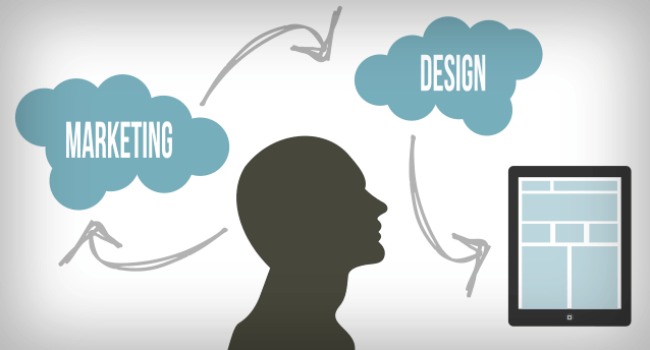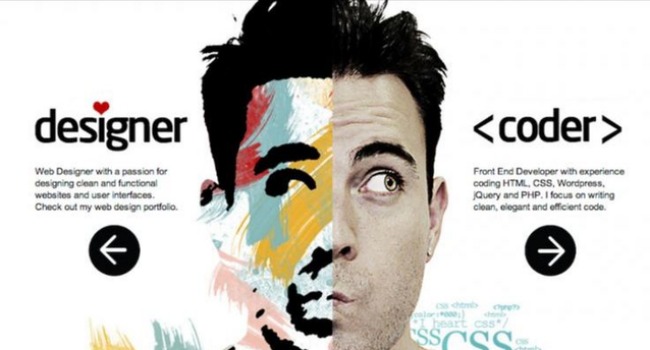“Design allows you to identify & narrate problems, solution them and create value. All this is achieved by deploying creativity as your primary tool.” - Rahul Verma
When I first met Rahul Verma 12 years ago he was far younger than he is now (as was I), but we shared a passion: focusing on creating great user experiences that customers desired and delivering awe inspiring solutions to solve real customer problems.
Since then we’ve gone our separate ways - Rahul taking up a position with Citi where he solves enterprise problems using design thinking every day, while I founded Fluid UI - but he has remained an ever present force in the design and UX community in Ireland, constantly championing design thinking as the best way to solve problems. Catching up with him again was a pleasure and we jumped into a discussion that reminded us of the intervening years while at the same time feeling like there was no break at all. I asked his opinions on:
Dave: What sort of processes and tools would you use to solve your users’ problems?
Rahul: Any user interface we design for our users or clients needs to be self-sufficient. The worst thing you can do is build customer support interfaces that no one can use. A proper solution means that people can do their job efficiently. An element of self-service should be built into every user interface.
Each problem is different and each solution is different. Designers need to have a variety of tools with them that they can bring to the table. A project may require qualitative research or it may need an interface evaluation and could be very well suited to a quantitative process.
I focus on service design, which involves designing an overall customer experience, across touch points; physical and digital. The field of service design is larger than and encompasses elements of UI, UX and CX put together. Let us take an example, Uber have various touch points including finance management, marketing and driver and cab regulation. It is a highly complex ecosystem. Some of their touch points are digital in nature and some tend to be physical. If you were to provide a consistent experience in a service organisation such as Uber and create a standard experience across touch points, service design can come in really handy.
Dave: How do you think design is changing and is there more emphasis on the customer and solving their problems?
Rahul: A lot of consumer companies are now adopting concepts such as Eric Ries’ lean startup and the Stanford human centred design toolkits. For example, Apple are pushing their products out via their product designers and when Marissa Mayer was head of product design in Google she was evangelising a lot of design thinking in that space.
As design thinkers, we put customers at the heart and the center of everything we do. We try to understand problems from their perspective. The underlying premise of design thinking is to start with problems and eventually come to solutions. It’s an incremental cycle as the human centred design construct will show:
It’s about starting with something small and building it up iteratively but always with the user in mind.
Dave: The relationship between design and development can be complicated. Where should design end and development start? Should they be in the same sprint?

Rahul: Design without execution goes nowhere and execution without design is useless. When delivering any product you should look at it from a holistic viewpoint. If you design something it will need to be executed and that means communicating with development and working in parallel. Processes should start at the same time and end at the same time.
Dave: A simple question, except very rarely do two people agree on it. How do you define design?
Rahul: My definition of design is creative problem solving - three simple words that encapsulate identifying problems and using creativity to come up with solutions to those problems.
The problem could be related to marketing, product or sales for example. Problems can vary wildly:
The solution doesn’t have to be a digital product. You need to create the right solution and build a minimum viable product with one or two key features that will have a significant impact on the product from customer’s perspective. The build, measure learn feedback loop will help you create targeted experiments to arrive at the right solution focused around solving real customer problems.

Dave: Companies are coming round to the fact that design thinking is hugely important and a lot has changed over the last couple of years in respect of the relationship between design and development and between design and marketing. How do you see this?
Rahul: The consumer context is important when talking about the connections between the two. Marketing and design work well together in the consumer context, however, there is a different type of design that comes into play in marketing. I think marketing is primarily about influencing the mindset of your consumer in order to convince them to buy your product or service. To achieve this outcome marketing teams use design as a tool or sub-discipline embedded within the core marketing discipline.
In a large organisation, you could have a marketing group who has its own design capability to create artifacts such as billboards or online campaigns or TV adverts and a product group with its own product design branch to design products or services. In some cases, the design teams could be the same but will have different objectives based on context, tasks will vary and the work will be unique as required by primary discipline
You can apply the same design approach and techniques solve those problems from the perspective of design thinking.
Dave: There are many designers who think that some things can be measured, and some things that can’t - the intangible aspects of design. What’s your take on metrics within design?
Rahul: I think you can measure almost all aspects of design using various tools and techniques. As long as you are clear on what you want to measure, you will be able to arrive at the correct technique. People who say they can’t measure design haven’t yet identified with a definition of design thus making it difficult to measure design.
Design can go across various disciplines and very different types of problems, so it depends on what you’re trying to measure as well. For example, in the space of usability or user experience you could use qualitative measures like system usability scales or matrices such as ESE (efficiency, satisfaction and ease of use). You could use quantitative surveys with tools such as survey monkey.
Dave: What question do you often get asked, or feel strongly about, which I haven’t asked yet?
Rahul: Hiring! As design is such a broad discipline, in order to hire a great designer you need someone who can communicate their personal definition of design. Then and only then can you find a designer that will suit your particular needs. Likewise, unless I have my own definition for design, I won’t be able to hire the right person for the job description because I will be hiring from a spectrum of designers and not everyone will be the right fit for my company. There’s UI, UX, IA designers, researchers, analysts, service designers, design thinkers to name a few and you may need a combination of these disciplines.
I don’t go for specialists, I tend to go for strong generalists - people who have skill in various aspets of design. Such as part user-research but part service design or part UX analyst and part qualitative research. It will always be a mix. It’s good to be able to overlap certain skills and people. It means you can swap responsibilities among teams as well and learn from each other.
The third thing I would say when hiring a designer, you have your definition of design, you’ve hired the right designer for the job, an individual who has the right quality of skills, when you have them on board, pay them well! The design discipline is unique and there’s only a set amount of designers, especially in Ireland. You have to realise how valuable these people are, especially those who have a mix of skills e.g. you could find product managers who have experience in digital design, they could bring a wealth of understanding from a commercial perspective into the design discipline or you could find web developers who have forked into UX design and will be able to translate designs into working prototypes for user testing. Those are the kind of skills you are looking for.

The scope of design thinking encompasses everything that is necessary to run a company. Every bit of experience or expertise can be of value to you as a design team. You could have developers transitioning into design and when you are designing towards execution, their knowledge of development is really priceless. They’re also really handy project managers in that space. They know development so well that they can execute the project for you as well.
In the same way marketing imports are really useful because they understand the marketing side of things and they have insights into focus groups and qualitative research. There’s no school that teaches a product manager to be a designer, you actually design your career over a period of time to be that.
Once you find the right person to work with, they will align with your vision and your definition of design. If they love what they do they will stay loyal to your company for a long time.

It’s not about what’s missing in design but that design is missing from some places.
Organisations around the globe have yet to put design at the core of what they do. This is a two edged sword. First, the organization itself is missing the potential competitive advantage it can have by adding design thinking to its toolkit and second, it limits the opportunity for designers at a global level because they are trying to find jobs and it can lead to the hiring of non qualified designers. I think design is at the same turning point that development was about 10 years ago when scrum was just starting to be introduced. Design and design thinking and the value it brings to companies is showing signs of maturity.
On a personal level, I always get people who come to me and say things like: “Hey we’re doing some commercial models.” And I ask, so you are designing models and the response I get is, “No, we are calculating numbers”. I smile. This is the kind of thing that really excites me and makes me happy. Everyone designs but very few people recognize or realize that they are designing things everyday.
Rahul Verma is head of design and innovation catalyst programs at Citi Innovation Labs. Design thinking, client experience and catalyst programs are integral components of his portfolio. He is helping discover new and cutting edge products and services for enterprise customers across channels and touch-points.
Connect with Rahul now on Linkedin.